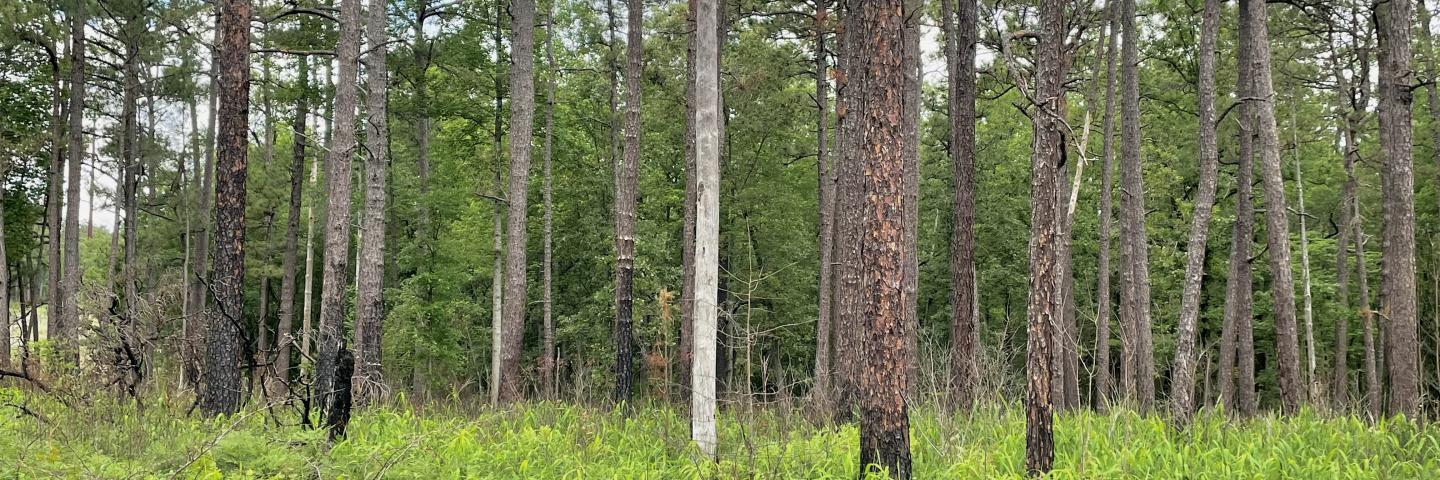The 2024 Sentinel Landscape Designation Cycle is Now Open.

The Sentinel Landscapes Partnership between the U.S. Department of Defense (DoD), the U.S. Department of Agriculture (USDA), and the U.S. Department of the Interior (DOI) promotes shared land use priorities and works to advance conservation outcomes in landscapes across the country.
On May 26, the Sentinel Landscapes Partnership alongside the Department of Defense (DoD) Readiness and Environmental Protection Integration (REPI) Program announced the opening of the 2024 Sentinel Landscape Designation Cycle. Building upon the success of the 11 existing sentinel landscapes, this exciting initiative reflects a decade of valuable lessons learned by the partnership in fostering innovative connections amongst partners in conservation, working lands, climate resilience, and national defense. The Sentinel Landscapes Partnership between DoD, the U.S. Department of Agriculture (USDA), and the U.S. Department of the Interior (DOI) promotes shared land use priorities and works to advance conservation outcomes in landscapes across the country where national defense, sustainable agriculture and forestry, and community resilience to climate change intersect.
Eastern North Carolina is one of the 11 projects, known as the Eastern North Carolina Sentinel Landscape. The Eastern North Carolina Sentinel Landscape spans nearly 11 million acres across a 33-county region in North Carolina’s Coastal Plain and Sandhills. The partnership was established in 2016 and since then USDA through the Natural Resources Conservation Service (NRCS) has invested around 60 million dollars according to the Sentinel Landscapes website.
“This shows a beneficial partnership in protecting not only natural resources but also the economic resources of both agriculture and the military to the state of North Carolina,” said Brian Loadholdt, N.C. NRCS Easement Coordinator.
This investment is especially important to the state. North Carolina currently is undergoing a historic loss of agricultural land to development ranking second nationwide, despite being a major provider to the state’s GDP. Recently agriculture accounted for a record $103 billion to the state, making it imperative to protect agricultural land now and in the future. Getting the official designation of sentinel landscape in one of many ways producers can protect this vital industry.
All parties interested in applying for a sentinel landscape designation must complete an Expression of Interest Form and submit it to [fcc@sentinellandscapes.org] by Thursday, July 27, by 11:59 PM in your local time zone. The Sentinel Landscapes Federal Coordinating Committee (FCC) representatives will notify applicants whether they have been invited to submit a full proposal by fall 2023. Selected applicants will have at least 60 business days to submit their full proposals. Final designations will be made in April 2024.
Eligibility includes any entity whose mission aligns with or otherwise supports the goals of the Sentinel Landscapes Partnership is eligible to apply. Examples of eligible entities include but are not limited to: federal agencies; state and local governments; Federally Recognized Tribes, Native Hawaiian Organizations, and other Indigenous Communities (including state-recognized tribes and Alaska Native Corporations); for-profit and not-for-profit organizations or associations with conservation, agricultural, or silvicultural missions; municipal water treatment entities; water irrigation districts; and soil conservation districts.
N.C. NRCS can also provide other assistance through voluntary programs to eligible landowners and agricultural producers to provide financial and technical assistance to help manage natural resources in a sustainable manner. Through these programs, the agency approves contracts to implement conservation practices that addresses natural resource concerns or opportunities to help save energy, improve soil, water, plant, air, animal, and related resources on agricultural lands and non-industrial private forest land. To get started, please visit your local USDA Service Center.
USDA touches the lives of all Americans each day in so many positive ways. To learn more, visit usda.gov.
#
USDA is an equal opportunity provider, employer and lender

